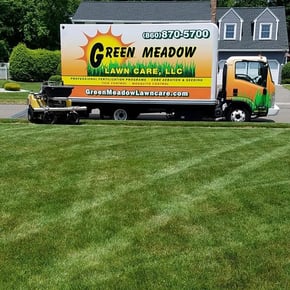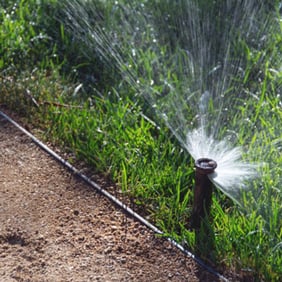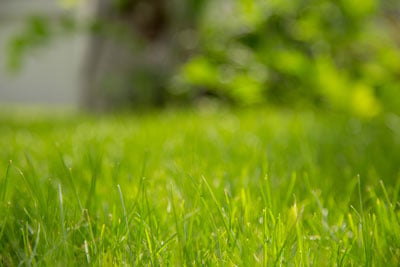You just seeded your lawn....now what?!
Your lawn care company has provided you with a seeding service - now what?! How do I make sure I am maintaining my lawn and that this service will not go to waste?!
Having a beautiful lawn is a great investment, one that can increase the value of a home (up to 20% !).
Seeding is an important step to take in helping the growth of a healthy, green lawn. Below you will find all the information you need about the seeding process and steps to take in caring for your newly seeded lawn.
The Seeding Process:
The #1 necessity here is seed to soil contact.
Establishing a new lawn from bare ground is typically done by hydroseeding (a planting process that uses a slurry of seed and mulch) or broadcast seeding (scattering seed either by hand or mechanically) and covering with a thin layer of straw.
To thicken up a thin lawn, slice seeding or aeration & seeding are the best ways to encourage new varieties of grass seed to grow. To read more about seeding & aeration, check out our article 5 Best Ways to Seed Thin and Bare Lawn Areas.
After the seeding process is complete the new lawn should be cared for on a daily basis. If not, seeds can potentially become vulnerable and die. Just like a newborn baby, they will need water and nutrients.

Watering:
Watering a new lawn is the most important step in caring for your newly seeded lawn. All seeds require moisture and a certain temperature ranger for them to begin germination.

Not enough water will cause:
- The ground to dry out.
- Death of the sprout.
Too much water will cause:
- Seeds to wash away.
- Puddles of seeds and muddy footprints in your lawn.
- Seeds to rot.
Seed Watering Schedule:
- Water approximately 15 minutes in the morning and again mid-day. Watering 2 times per day is essential until the new seeds have germinated.
- Once seeds have germinated, reduce watering to once per day. Areas that get full sun will soak up the water faster than shaded areas.
Use caution when/if picking out a sprinkler for new seed. The sprinkler should be gentle, like a light rain coming down. If you have an irrigation system available, set the time and make sure all areas get covered evenly.
Nutrients:
Nutrients are necessary to boost initial growth and aid in the development of the blades.
For many years we have been told to apply starter fertilizer directly after seeding. With the science of the turf care industry improving, there are now many other ways to get strong roots established.

The best method we have found after working with agronomists is to apply:
- Fast Acting Lime: sweeten the soil for the seeds to germinate faster.
- Humic acid: opens up natural resources in the soil
Connecticut tends to be very high in phosphorus which is the key nutritional element for grass seed to develop. When the ground is exposed to natural phosphorus sources, it is not necessary to use a starter fertilizer.
Since the new grass is going to require a lot of moisture, if you fertilize with a traditional starter fertilizer when seeding, the nutrients are going to be gone at the most essential time of germination.
3 Weeks Post Seeding: When the grass is starting to sprout, a starter fertilizer should be applied.
When to apply Herbicides: After your grass has been mowed at least 2 times. It is essential that the lawn’s roots are fully established.
Gentle Care:
Finally, in caring for your lawn, make sure to:
- Limit foot traffic and mowing while your grass is getting established.
- Monitor grass development and start cutting when grass is approximately 4 inches tall.
- When considering the best time to seed your lawn, early fall is the most beneficial due to cooler temperatures and the seed not getting overpowered with weeds.
If this article was useful to you, read some others similar to it:
- Which Kind of Grass Seed is Best for My Lawn?
- Fall Seeding vs Dormant Seeding
- Times of Year to Over Seed Your Lawn [Best to Worst]
- 5 Best Ways to Seed Thin and Bare Lawns
- Overseeding Your Lawn - The Ultimate Guide
- When Does Grass Seed Germinate? [Air Temp vs Soil Temp]
Since 2007, Green Meadow Lawn Care has provided homeowners throughout the greater Tolland, Connecticut area with premium fertilization programs, tick control, mosquito management, seeding & aeration and tree & shrub care.
Visit our Learning Center to find out more about how our services can help you or visit our Youtube Channel to view more in our Learning Center Series.
To speak to our Customer Service Manager, please call Dave (view Dave's video bio here) with any questions. Dave has been in the industry for 30 years and is always happy to help with his expert advice.
860-870-5700




